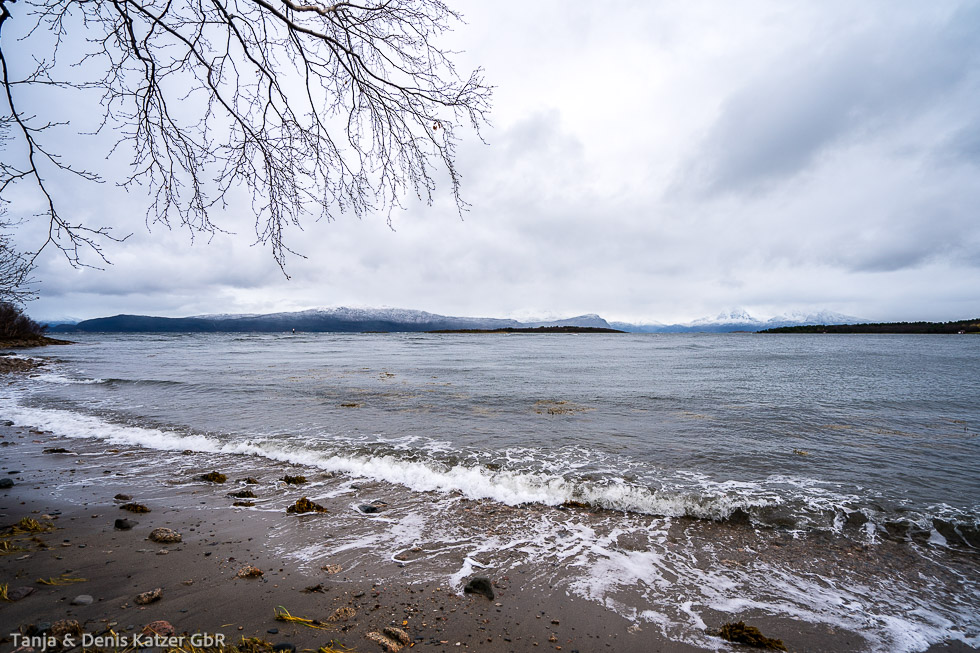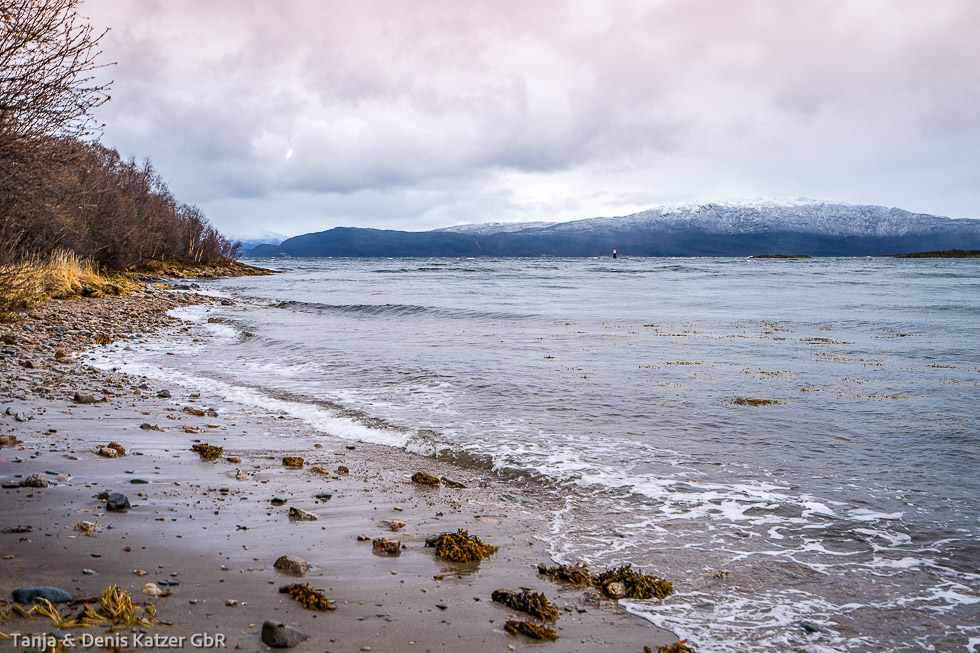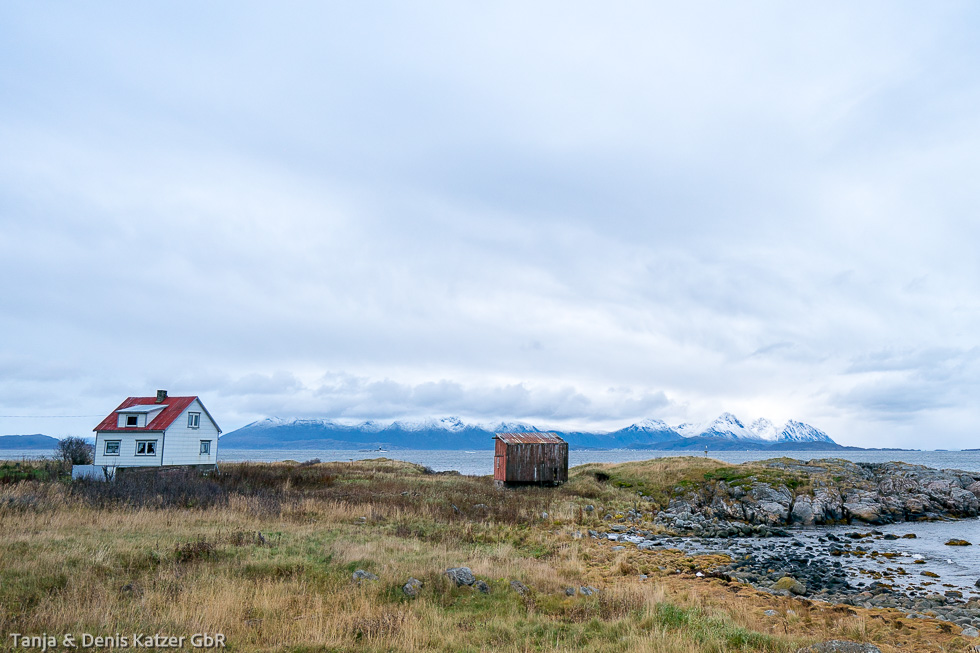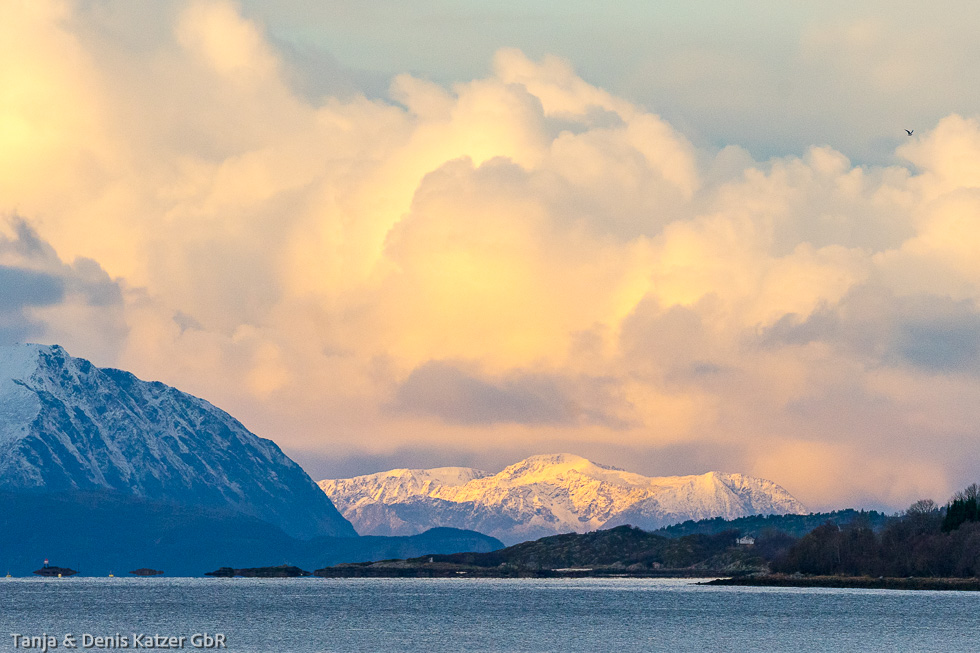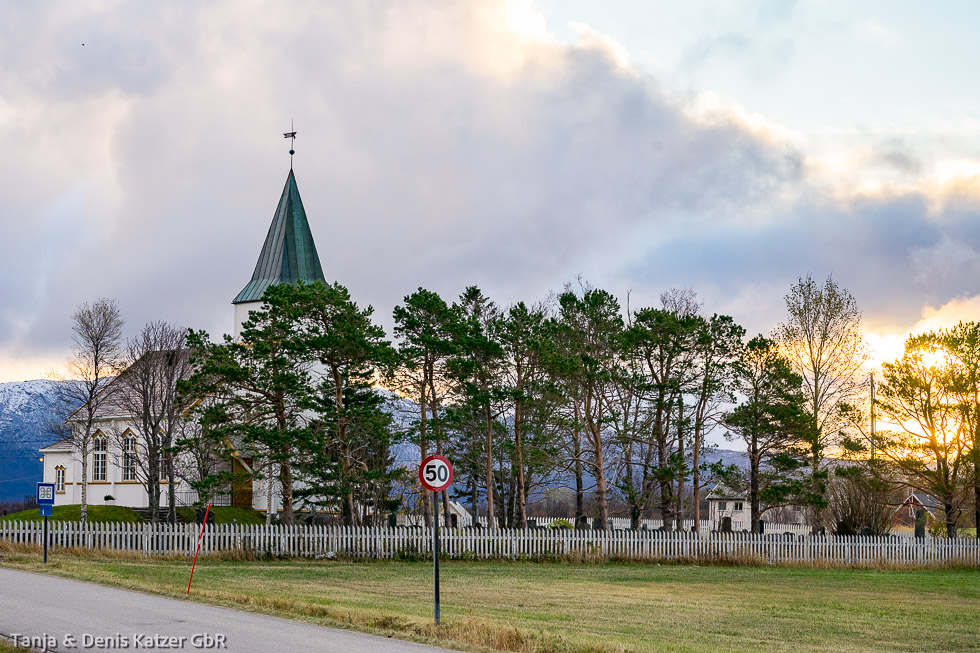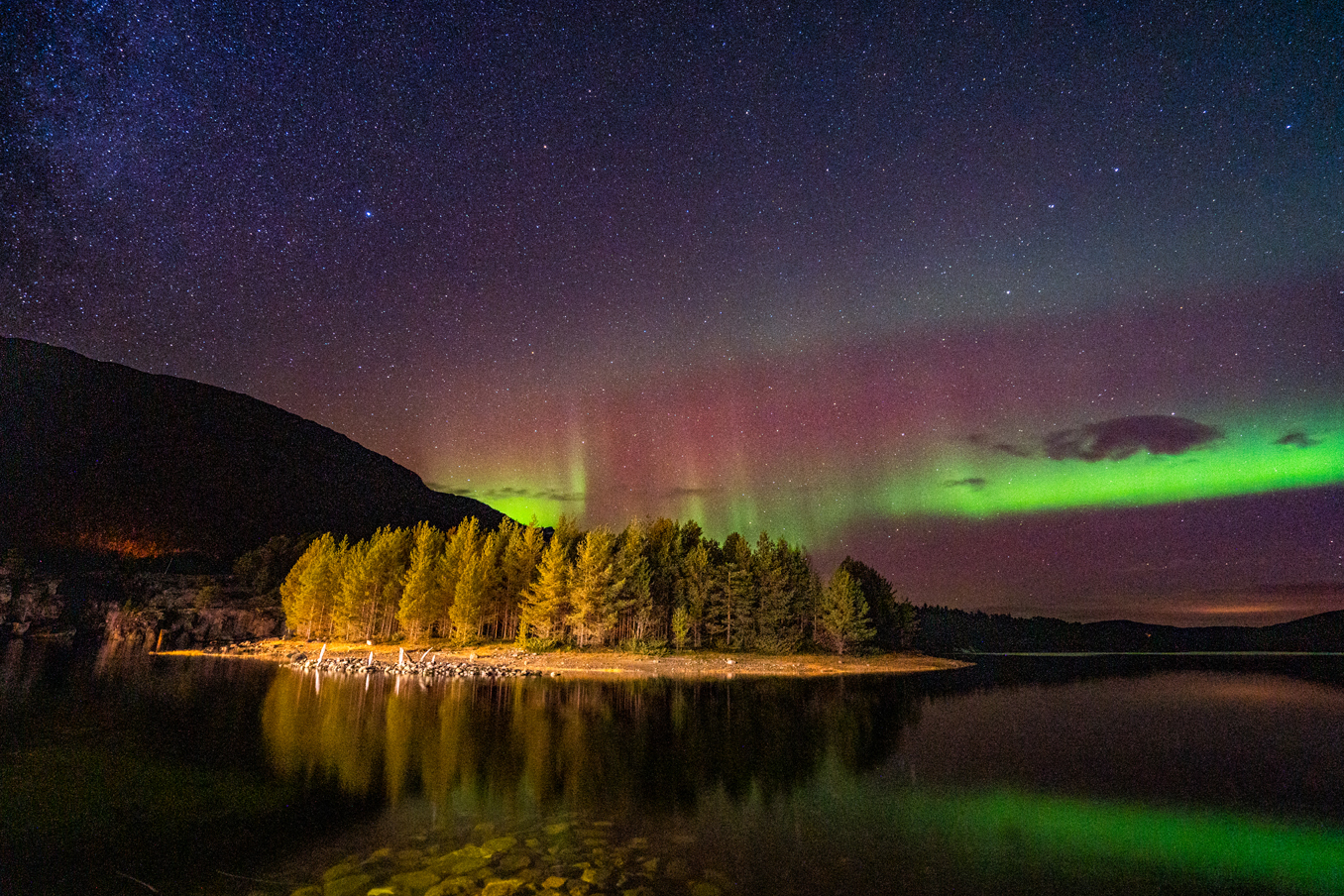
The road ends at the extreme southwest of the island of Senja
N 69°05'02.1'' E 017°10'14.5''
Date:
17.10.2020
Day: 076
Country:
Norway
Location:
Senja
Daily kilometers:
220 km
Total kilometers:
7347 km
Soil condition:
Asphalt
Bridge crossings:
16
Sunrise:
07:45 a.m.
Sunset:
17:14
Temperature day max:
2°
Night temperature min:
-4°
Time of departure:
10:00 a.m.
Arrival time:
5:15 pm
(Photos of the diary entry can be found at the end of the text).
Click here for the podcasts!
Link to the current itinerary
(For more posts click on one of the flags in the map
“That’s the way to Senja!” says Tanja, pointing to a sign. I put the blinker on. “Off to paradise!” I shout. We were already on the island last year. However, as our goal was the Russian Arctic Circle expedition, we only stayed for two days. However, we enjoyed Senja so much that we promised ourselves that we would return at some point with more time in our luggage. Well, who would have thought that this time would be just one year later?
As soon as we have left the E6 behind us, the traffic becomes even less and the road narrows again. We meander 35 kilometers across the lonely landscape until we reach the small town of Finnsnes with its 4,754 inhabitants. “Do we have enough supplies?” I ask, because this is where the last good shopping opportunities are. There are also small supermarkets on Senja, but they are not as well stocked and are quite expensive. “We should get through the next 10 days well,” says Tanja confidently. “Okay,” I reply, steering the Terra towards the imposing Gisund Bridge, which at 1500 meters is the longest pier bridge in Europe. “Left or right?” I ask Tanja as the road splits at the end of the bridge. “You decide.” “Well, let’s head left to the western side of the island first. From what I’ve read, a dramatic natural and mountain world awaits us in the west and north. The descriptions say that the landscape is deeply indented by fjords and that sharp rock faces rise extremely steeply from the surf,” I listen to my gut feeling and set the blinker. As we have become accustomed to in recent weeks, this narrow little road is almost ours alone, as if it had been built just for us. This allows us to take our time and enjoy the drive and the scenery on Norway’s second largest island to the full without obstructing the traffic.
“What is our goal today?” Tanja wants to know. “Let’s just drive as far as the road ends. Maybe we’ll find a great place to stay there for a few days,” I reply. “Yes, that would be nice. Everything seems so deserted here that we can enjoy the solitude and peace and quiet to the full.” “You’re funny. Since we’re in the far north and winter is fast approaching, it’s lonely everywhere,” I reply. “That’s true, but there seems to be even less going on in Senja. At least there are hardly any cars here.” “The island only has around 8,000 inhabitants and maybe some of them moved to the mainland at the beginning of winter,” I guess. We turn onto a side road which, according to the satnav, takes us to the far southwest of the island. Since we have been on Senja, the roads have been free of snow again. Although Senja is located approx. 350 km north of the Arctic Circle at 69 degrees north latitude in the European Arctic Ocean, the climate is comparatively mild, just like on Lofoten and Andanes, thanks to the Gulf Stream. Perhaps one reason why it hasn’t snowed yet. This is a very good sign for us, as we want to spend some time here and don’t want to risk being cut off from the outside world. The small road Fv221 winds directly along the North Sea. The alpine-looking mountain world around us is covered in snow right down to the valley. Heavy, low-hanging clouds stretch across the fjords. The landscape looks dramatic. Cold wind stirs up the sea. Waves crash against the falling shore just a few meters away from us. A small lighthouse fires its bright beam of light across the water to warn fishing boats of shallows. A lonely wooden house defies the elements. The smoking chimney protrudes from the red, weathered corrugated iron roof and reveals that someone actually lives there. The small settlement of Skrolsvik appears behind a bend at the south-western tip of the island. Behind the charming fishing harbor of the village, the asphalt suddenly ends and turns into a gravel road. “And now?” asks Tanja. “Now we follow the track until we find a place to camp,” I reply, shifting down a gear and steering the Terra onto the dirt road. “I can’t wait to see what’s waiting for us at the end of the track,” I say, full of anticipation for a great location on a lonely beach. Only 4 kilometers further on, the road ends in the driveway of a beautifully situated house at the foot of a mountain. “That’s it. I can’t go any further here,” I say disappointedly. “And what do we do now?” Tanja wants to know. “I have no idea. Unfortunately, we can’t stay here.” “So we have to go back?” “Yes, but I didn’t find anywhere to stay for the night along the entire route. Either it was forbidden or there simply wasn’t enough space next to the road.” “There were a few parking bays along the road, weren’t there?” “They were alternative bays. I don’t think the locals like it when we take away their only opportunity to pass each other. Oh boy. It’s all the result of too much tourism. Even here on Senja.” “I can understand the Norwegians. They don’t want motorhomes in their driveways, yards and on the side of narrow roads. They can only save themselves with prohibition signs,” says Tanja. “I just didn’t think it would be difficult to find a place to stay overnight in such a remote place in the far north of Norway. In the south, yes. I understand it there. There are a lot more holidaymakers there than here in the north.” “Word has gotten around about the beauty of Senja. I can imagine that the islanders are literally flooded in the summer,” Tanja replies. “I can well imagine that too. Nevertheless, I would love to have a great place by the sea right now. But what the hell. Let’s turn around again. We’ll find somewhere suitable,” I say confidently, turning the Terra around.
The sun has just disappeared behind the horizon line when we reach the 225-soul village of Stonglandseidet 30 minutes later. We decide to spend the night in the parking lot of the grocery store. A far cry from an idyllic, secluded campsite by the sea. But as it’s already getting dark, we can’t see anything anyway and are glad we don’t have to drive any further. We pull up the screens on our windows and settle in for the evening. “It’s fantastic to be able to live in a rolling, pleasantly tempered apartment. It’s always cozy here, no matter where you’re parked,” I say, snuggling up in my comfy seat. “Yes, and tomorrow is a new day. We’ll find a nice place on this 1600 square kilometer island where we can spend a few days,” says Tanja hopefully…
